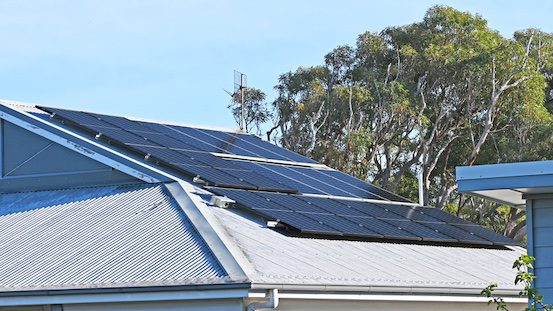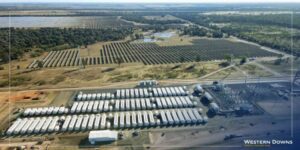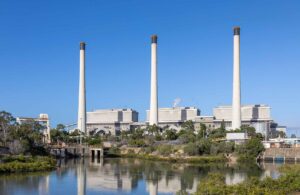A “nation-leading” plan to progressively transform Queensland’s regional grid into a series of bespoke local renewable energy zones will kick off in the coastal city of Caloundra with the installation of community battery storage.
The Labor Miles government said on Tuesday it would fund $40 million for the Caloundra LREZ pilot project which will use 8.4 MW and 18.8 MWh of community batteries to store energy from existing and additional rooftop solar systems and share it across the local network when in night-time demand peaks.
The funding includes $3 million to optimise the size of behind the meter customer assets including solar PV, batteries, electric vehicles, home energy management systems and dynamic connections for the Caloundra LREZ pilot project.
The project will also allow the benefits of renewable energy to be shared amongst all customers on the LREZs, including renters, vulnerable customers, those who live in apartment complexes and others who have not been able to install solar.
Peter Price, chief engineer at state-owned distribution network company Energy Queensland, says this and other LREZs it is planning could deliver the peaking power equivalent to a coal plant and triple the network’s capacity to connect residential rooftop solar.
Already, Energy Queensland has more than 5GW of solar connected to its grid, which is more than three times the size of the largest coal generator. Caloundra has ranked among the top-five regions for the uptake of rooftop PV.
“We have the rooftop space and the capacity within the electricity network to do this quickly,” says Price.
“The Distribution System Operator function allows us to bring everything together – solar PVs, the utilisation of EV chargers, behind-the-metre products at a customer premises, network-connected batteries and tariffs for customers.
“Our L-REZ pilot projects in Caloundra and Townsville will provide invaluable insights to how to put customers at the centre of a smart, integrated electricity network and will pave the way to support Queensland’s energy transition.”
State energy minister Mick de Brenni says the LREZ initiative has also been championed by local MPs, Sunshine Coast sustainability groups and industry advocacy group the Smart Energy Council.
Smart Energy Council chief John Grimes has described it as “an innovative, nation leading concept… [that] puts cost of living relief at the centre of energy policy and households at the heart of the energy market.”
Caloundra MP Jason Hunt says the “beauty” of the LREZs is that they can be designed specifically for each community and will be scalable for urban, regional, remote and isolated communities.
“LREZs will help foster thriving communities like Caloundra and also foster a clean energy economy by lowering costs, creating job opportunities and achieving Queensland’s renewable energy targets through coordinated planning and investment.
“LREZs will also create business opportunities and jobs in our clean energy market and supply chain, by providing opportunities for businesses to invest in rooftop solar, and further stimulating battery manufacturing, solar and storage installation, and electric vehicle charging infrastructure industries,” Hunt says.
De Brenni says that, while the LREZ pilot marks a first of its kind for Queensland, it is readily achievable thanks to the public ownership of the state’s energy assets.
“This exciting LREZ initiative… puts everything on the table, including more affordable power, access to the benefits of rooftop solar for renters, innovative network solutions,” the energy minister says.
Queensland permier Steven Miles says the plan is for the regional LREZs to be at the forefront of a community-led renewable energy transformation.
“Right now, communities that benefit from high levels of sun cannot use those renewables at night. So the answer is storage and using Local Renewable Energy Zones to facilitate the transfer.
“LREZs will maximise the use of existing network infrastructure and batteries to produce, store, share, and use renewable energy locally,” Miles says.
The Caloundra LREZ pilot project will see the deployment of up to 8.4MW/18.8MWh of battery storage and support up to an additional 2.8MW of solar PV, and 0.9MW of demand management, Energy Queensland says.
The benefits will be shared across residential and commercial customer sites in Caloundra, starting from January 2025.
Locals can register their interest to participate at: www.energex.com.au/lrez








